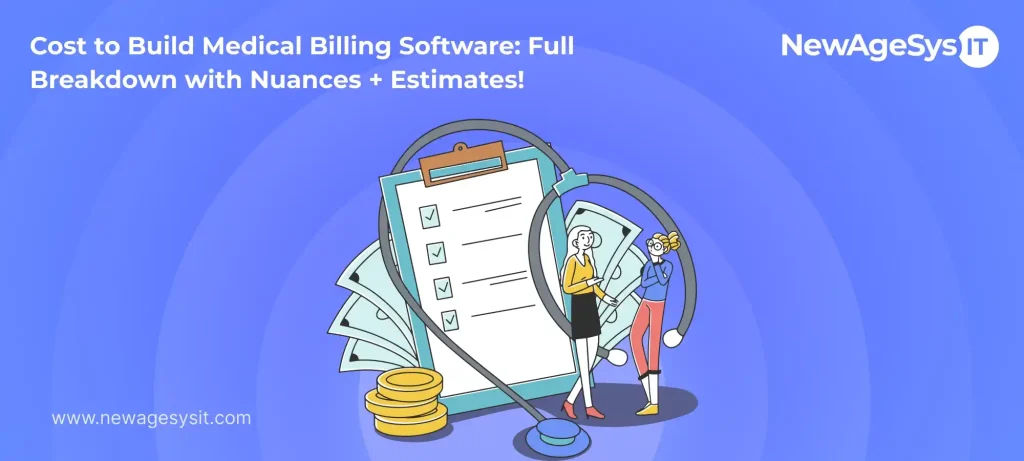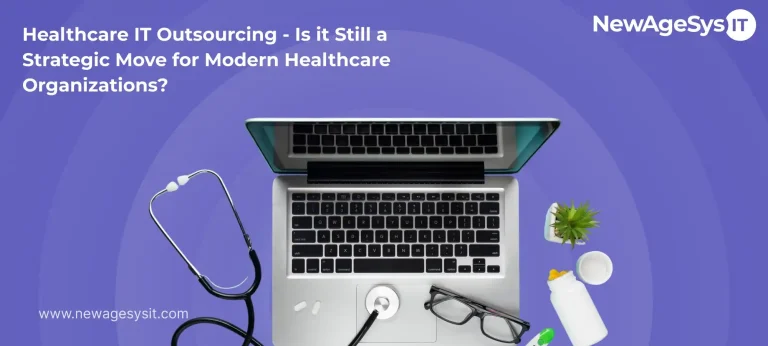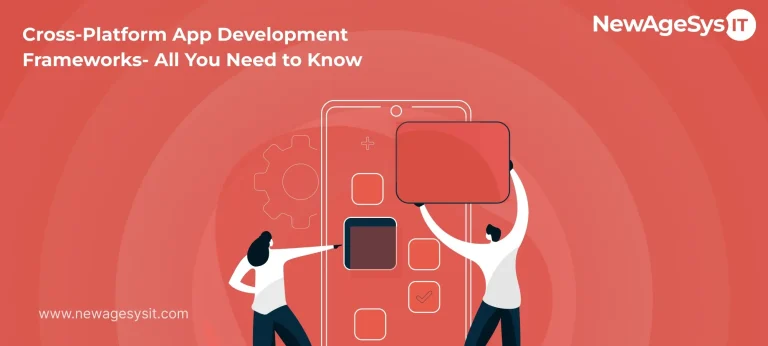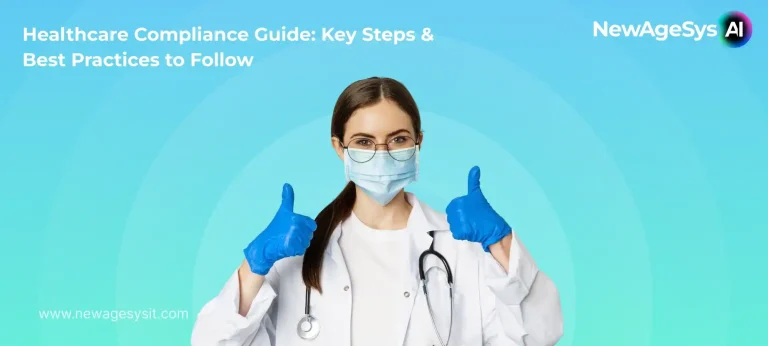| Key Takeaways: Custom billing software is a necessity for multi-speciality healthcare institutions with complex workflows. Development costs vary widely, starting from $26,000 for an MVP to over $1M for enterprise-grade solutions in the U.S.. Critical cost drivers of a medical billing software include feature set, compliance, integrations, UI/UX, and deployment model. A modular, HIPAA-compliant architecture with EHR and clearinghouse integration is vital for success. |
Off-the-shelf medical billing software like Kareo, Dr.Chrono, etc., is simply impeccable if you are a small clinic, an independent practitioner, or a specialty practice for a small clinic. They hardly cost $300 per month and are compliant in nature. However, the scenario completely flips if you are an institution with 50-100+ providers, have multi-facility or multi-state operations, require custom billing models, and more. For you, nothing less than custom medical billing software is going to work.
And to address your most pertinent problem, we have created this “Cost to Build Medical Billing Software” article.
As you scale, the number of daily claims increases, + additional requirements like EHR/EPM integration, unique payer information, reporting complexities, etc., come into play. So, naturally, institutions start to realize the need for a much more tailored medical billing solution that can reduce their workload and manual errors. In fact, here are some notable implications of using a custom medical billing software to give you further perspective, as shared by multiple firms across the internet:
| Productivity Aspect | Measured Impact/Stat | Source(s) |
|---|---|---|
| Manual Data Entry Time | ↓ Significant reduction with automation; reduces errors and saves time | 1234567 |
| Claims Denial Rate | ↓ Lower denial rates due to automation, real-time claim validation | 89101112 |
| Accounts Receivable Turnaround | ↓ Faster payments, improved AR follow-up, reduced outstanding days | 1314 |
| Admin Staff Requirements | ↓ Fewer staff needed as automation replaces manual/repetitive tasks | 15161718 |
| Repetitive Task Burden | ↓ Automation eliminates repetitive billing/coding tasks | 151918 |
So if you’re convinced, let’s get the answer to the billion-dollar question:” Cost of Medical Billing Software Development for Your Requirements?”. However, before that, it is important to uncover critical nuances surrounding the topic for a more holistic understanding. If you directly want to learn about the estimated cost, feel free to scroll down to the end of this article.
What is a Custom Medical Billing Software?
A custom medical billing software is a tailored digital solution designed to manage the billing requirements and workflows of your healthcare organization. It is unique, follows payer rules as per your requirements, covers all the specialties, and has everything integrated, business-critical to you.
By the definition, you may have gotten a decent idea of the benefits of using a custom solution for billing. However, to make it much clearer, here are the benefits in brief.
Custom Medical Billing Software Benefits:
- Tailored as per your workflow and specialty needs
- Fewer claims errors with custom validation rules
- Smooth EHR & system integration
- Scales as per requirements
- Delivers custom reports for a holistic financial outlook
- Faster reimbursements via automation
- Delivers stronger compliance (e.g., HIPAA, ICD-10)
- Gives full data control and security
- Not limited to a subscription limit
Types of Medical Billing Software – Medium to Enterprise Grade
This section covers the types of medical billing software from a medium to enterprise-grade perspective. Although medium-scale organizations often prefer to get by using an off-the-shelf solution, there are scenarios where they might need a custom one. This mainly happens when they are limited by off-the-shelf solutions, require better data control, or desire scalability for growth.
Additionally, each of the types of medical billing software can be developed in two ways. These are web-based medical billing software or cloud-based medical billing software. Organizations today prefer to make use of private (for compliance-heavy orgs) or hybrid (for combining legacy + cloud systems) cloud, and sometimes have an acute requirement for a web-based platform (for strict data government), and hence the two bifurcations.
Now, let’s dive into the types:
1. Modular Custom Billing Suites
🔹 For: Medium & Enterprise
🔹 Features:
- Pick-and-choose functionality
- Easy integration with third-party EHRs, LIS, CRMs
- Scalable without full-suite commitment
2. Integrated EHR + Billing Systems
🔹 For: Mid-to-large institutions with in-house care + finance teams
🔹 Features:
- Billing codes auto-population from clinical data
- Claims denial reduction with documentation matching
- Medical charge capture and reimbursement
3. Multi-Location & Multi-Specialty Billing Platforms
🔹 For: Expanding practices, hospital chains, MSOs
🔹 Features:
- Configuration for different payer rules, specialties, and state laws
- Role-based access per location or department
- Consolidated analytics
4. Specialty-Specific Billing Solutions
🔹 For: Cardiology, dermatology, behavioral health, orthopedics, etc.
🔹 Features:
- Custom CPT/ICD mapping
- Specialty workflow triggers
- Built-in prior auth tools or code scrubbers
5. Claims Clearinghouse & Payer Gateway Systems
🔹 For: Larger institutions or agencies managing high claim volumes
🔹 Features:
- Custom payer rules
- Real-time adjudication and denial reporting
- Automated re-submissions and alerts
6. Patient-Centric Billing Portals (Self-Service Frontend)
🔹 For: Clinics and hospitals looking for a better patient financial experience
🔹 Features:
- Custom-branded portals/apps
- Secure payment gateway integrations
- EMI plans, auto-reminders, and multilingual support
7. Analytics & Reporting Dashboards
🔹 For: CFOs, Revenue Managers, Billing Heads
🔹 Features:
- Custom KPI dashboards (AR days, denial rate, collections %)
- Drill-down filters by location, payer, service type
- Predictive analytics for financial planning
8. APIs & Middleware for Legacy System Integration
🔹 For: Both tiers with existing EHRs or HIS systems
🔹 Features:
- HL7, FHIR, and custom API support
- Real-time sync with practice management systems
- Enables gradual system modernization
9. Compliance & Audit-Tailored Systems
🔹 For: Institutions handling audits, CMS programs, or operating across jurisdictions
🔹 Features:
- HIPAA, HL7, ICD-10, and CMS rule engines
- Controlled access, versioned logs
- Custom export formats for audits or insurers
10. Hybrid or Cloud-Native Custom Platforms
🔹 For: Remote-first organizations or multi-state operations
🔹 Features:
- Private/hybrid cloud infrastructure
- Secure access across clinics
- Pay-as-you-scale model
Generic Custom Medical Billing Software Features – Business Critical
The range of medical billing software features is practically a sea of different requirements that can be integrated into your custom solution. So, below we have mentioned some business-critical features that align with most enterprise-grade medical billing solutions.
- 🧾 Claim Management – Auto-fill, batch submission, and payer validation
- 🧠 Smart Coding – CPT/ICD suggestions, scrubbing, and specialty rules
- 🛡️ Eligibility Checks – Real-time insurance verification & auth tracking
- 🚫 Denial Management – Track denials, auto-resubmit, appeal workflows
- 💰 Payment Posting – ERA auto-posting & reconciliation
- 📩 Patient Billing – E-invoices, payment plans, reminders
- 📊 Revenue Analytics – A/R dashboards, denial rates, forecasts
- 🏥 Multi-Clinic Support – Location-wise billing, rule configuration
- 🔒 Compliance & Audits – HIPAA ready, audit trails, role-based access
- 🔗 Integrations – EHR, CRM, labs, clearinghouse via HL7/FHIR/API
Custom Medical Billing Software Development Process
Considering the varied requirements, it won’t be possible to share a single process that fits all. However, from a requirement gathering perspective and what would unfold later on, it is possible to provide one. So, below we have mentioned our process that we follow while developing solutions for our clients. The process is a structured blueprint that you can use to assess different stages followed by the healthcare software development company you hired.
1. Requirement Analysis
At this stage, we begin by identifying the user role, i.e., billers, admins, and providers. We also work on defining billing workflows and creating a list of integrations required for the client software.
Another important facet that we work on is the list of essential regulatory compliances (e.g., HIPAA, ICD-10, FHIR) that need to be considered for the project. For that, we assess the type of data the medical billing software would be interacting with, along with associated covered entities and business associates.
2. Solution Architecture & Planning
To develop the solution architecture, we understand requirements like desired scalability, performance, and security goals. This helps us plan the database structure, APIs, and integrations. Moreover, it allows us to choose a relevant tech stack for the solution on its implementation, i.e., web-based or cloud-based.
Here is a tech stack generally considered for creating a custom medical billing software.
Learn About: Why Golang is a Performant Choice for Billing Applications?
| Layer | Technology / Tools | Usage | Purpose |
|---|---|---|---|
| 🌐 Frontend | React.js, Angular, Vue.js | Web-Based | Interactive UI, dashboards, billing interface |
| 🖥️ Backend | Node.js, Django, .NET Core, Laravel | Both | Business logic, claims engine, user management |
| 🗃️ Database | PostgreSQL, MySQL, MongoDB, MS SQL Server | Both | Secure storage for billing & patient records |
| ☁️ Cloud Provider | AWS, Microsoft Azure, Google Cloud (GCP) | Cloud-Based | Hosting, uptime, storage, scaling |
| 🔌 Integrations | REST APIs, GraphQL, HL7, FHIR, X12, OAuth2 | Both | External system connectivity (EHRs, payers) |
| 🔐 Security Layer | TLS/SSL, JWT, RBAC, HIPAA-ready frameworks | Both | Secure access, data privacy & compliance |
| 📈 Analytics Layer | Power BI, Metabase, Superset, D3.js | Both (Cloud Preferred) | Reporting, revenue insights, performance data |
| 🔄 DevOps & CI/CD | Docker, Kubernetes, Jenkins, GitHub Actions | Cloud-Based | Scalable deployments, automation |
| 🧪 Testing Tools | Postman, Selenium, JMeter, Cypress | Both | Testing APIs, UI, load handling |
| 📬 Notifications | Twilio, SendGrid, Firebase Cloud Messaging (FCM) | Both (Cloud Preferred) | Alerts, billing reminders, communication |
3. UI/UX Design
While medical billing software is primarily developed for institutions, there are spaces where it needs to be developed for patients. Few spaces are a digital billing portal, chat or message billing helpdesk, document upload, etc.
So, the UI/UX of the custom medical billing software needs to be thought from the perspective of both the institution and the patients. It needs to be intuitive with a well-laid-out dashboard and billing flow for not so non-tech-savvy users. Additionally, it should follow mobile responsiveness for both patients and staff, as most people use their smartphones to gather information. And, it should be designed keeping role-based views in mind.
4. Development
For development, we prefer a modular approach. In this approach, both frontend and backend coding are done in modules. It is preferable as it makes it easy to further upgrade or update the software in the future. With a modular approach, suppose we have to make changes to the billing calculation, then we will only make changes to the module that deals with billing.
In addition, we try to provide custom logic for claims, medical coding, payments, etc., as desired by the institution. And, integrate features like integration with EHR, clearinghouses, and payment gateways at this stage.
5. Testing & QA
There are several types of tests that are to be conducted to ensure that the software can leave the production stage and finally be deployed. Common tests performed are functional and integration. However, testing security and compliance is a mandate considering medical billing software processes’ PHIs, which are protected as per HIPAA.
We also simulate claim lifecycles, denials, and payments to assess their functionality, and conduct user testing for staff as well as billers.
6. Deployment
If the client intends to have a cloud-based application, then the cloud or hybrid hosting setup is established at the deployment stage. A few more things that are done are data migration from the legacy systems (if any), and the initial training and user onboarding.
7. Maintenance & Support
Maintenance and support come much later when the software is deployed and is running in full force. It is done because software requires regular updates as per new payer rules or medical codes. Plus, there are additional tasks such as 24/7 support, bug fixes, and compliance patches that are regularly done.
The application is also monitored for performance, ensuring that the users of it are not having a hard time utilizing it. Also, changes are made as per scalability requirements.
Factors that Influence Medical Billing Software Development Cost [As Per Current Norms]
Before getting into the nitty-gritties of factors that universally affect the cost of medical billing software development, here’s a table that shares those factors at a glance:
| Cost Factor | Typical Impact Level |
|---|---|
| Features Set | Major |
| Integrations | Major |
| Compliance/Security | Major |
| UI/UX | Moderate to Major |
| Scalability | Major |
| Team/Location | Moderate |
| Ongoing Support | Moderate to Major |
Now, to further understand the importance given to these factors, we have discussed each below, sharing nuances around it:
1. Feature Set and Complexity
To create medical billing software, developers combine a variety of features together, often referred to as the feature set of the software. This feature set decides the complexity of the application.
To add, a software like medical billing is a culmination of basic features like patient registration, claim generation, payment tracking, etc., + advanced features such as real-time analytics, AI-assisted coding, patient portal, and whatnot.
Further on, there are custom requirements that are unique to your software or institutional requirements. These primarily revolve around workflows, branding, or any specialty requirements. Each of these things heavily adds to the cost of medical billing software development.
2. Integration Requirements
With the advent of digital healthcare, especially in the U.S., healthcare institutions are required to save, secure, and protect patient data for a stipulated time of 6 years, as per HIPAA. So, naturally, it becomes important for healthcare institutions to demand integration with EHR/EMR systems, practice management software, lab systems, pharmacies, etc., to maintain the data holistically.
This requirement is inadvertently reflected in the cost to build medical billing software today. Also, there is the cost associated with data migration, especially if the volume of legacy data is a lot.
3. Regulatory Compliance and Security
Another mandatory medical billing software development cost is adherence to compliance. In the U.S., it is HIPAA for software/apps that deal with patient data. Additionally, there are several regional standards that need to be adhered to if your organization or one of its franchises is operating in a regulated region.
Most of these regulations have security demands that also contribute to the cost. A few examples of it would be access controls, encryption, audit logging, regular penetration tests, etc.
4. User Interface (UI) and Experience (UX)
As discussed earlier, to develop medical billing software, you need to keep both patients and institutions in mind. Also, not every user is going to be tech-savvy. So, it is important that the UI/UX developed is intuitive in nature. For that, you require skilled designers who also add to the cost.
5. Scalability and Deployment Model
Now, another choice most healthcare institutions have to make is to either get a cloud-based medical billing software or a web-based medical billing software developed. The advantages are multi-location support, remote access, supports many users, and makes the architecture easily scalable + your application becomes future-proof. However, it increases the cost to build medical billing software.
6. Development Team and Location
A lot of people often undermine this aspect. However, the kind of team you are choosing also impacts the cost. For instance, an in-house team, a specialized agency, onshoring, or outsourcing partner. Here’s a view of the general prices associated with the development of a custom medical billing software by different teams.
| Development Model | Estimated Cost (USD) | Timeline |
|---|---|---|
| In-House Team | $250,000 – $600,000+ | 9–18 months |
| Specialized Agency | $150,000 – $400,000 | 6–12 months |
| Onshoring | $100,000 – $250,000 | 6–12 months |
| Nearshoring | $180,000 – $350,000 | 6–10 months |
| Offshoring | $50,000 – $150,000 | 4–9 months |
It is important to note that a lot of people, due to the cost-effective nature of offshoring, choose companies from countries like India, the Philippines, Vietnam, Bangladesh, etc. But, it often becomes harder to align with these companies as they are in a completely different time zone, have different cultural values, work ethics, and whatnot. And, this is the exact space where we, i.e., NewAgeSys, shine. We are a USA-based company with multiple self-owned offshore development centers. This enables us as an organization that carries the values and work ethic of the USA, but the pricing of a preferred offshoring country.
7. Ongoing Maintenance and Upgrades
Another cost that many institutions fail to consider at the beginning is ongoing maintenance and upgrades. It is important to factor this into your medical billing software development cost, as it is simply unavoidable. Be it updates for new billing codes, compliance standards, bug fixes, etc., or technical support, maintenance cost is a must.
And, even if you somehow avoid the aforementioned, there are new security vulnerabilities (malware, viruses, etc.) circulating on the internet, or maybe an infected storage device connected to your intranet.
Keeping up with all of this requires upfront cost. A good practice in this case is to hire the same nearshore or offshore company that developed your software. You may be able to crack a decent deal, and being the developer, they understand the ropes around your software. Also, some companies provide support & maintenance in their package that is often cost-effective in comparison to a standalone maintenance company hired.
8. Other Notable Influences
These influences include costs associated with training & support, graphical elements used, and reporting.
Once the development of your software is complete, several processes like onboarding, documentation, and support are required. This is especially true if the deployment occurs on a large scale. And, if you want custom dashboards, charting modules, or advanced reporting tools, a layer to the medical billing software development cost is added.
Cost of Medical Billing Software Development – Custom Solution!
If we consider the cost of medical billing software development from the U.S.’s perspective, then the pricing would be as such:
| Scope Level | Estimated Cost (USD) | Timeline |
|---|---|---|
| Basic MVP | $150,000 – $250,000 | 5–9 months |
| Mid-Scale Solution | $250,000 – $500,000 | 8–14 months |
| Enterprise-Grade System | $500,000 – $1M+ | 12–20+ months |
These costs are assuming that the per-hour cost of healthcare development in the U.S. lies between $100 $180, depending upon the complexity of the application. However, since we are a U.S.-based company with offshore development centers, we are able to deliver prices between $25-$49 per hour.
So, you get the quality and work ethic of the U.S. but the prices of an offshore country. And, if we consider our prices, then this will be the medical billing software development cost for your custom solution:
| Feature / Module | Estimated Hours | Cost Range (USD) |
|---|---|---|
| Patient Information Management | 80 – 120 hrs | $2,000 – $5,880 |
| Claims Management System | 150 – 220 hrs | $3,750 – $10,780 |
| ICD-10/CPT Code Integration | 60 – 100 hrs | $1,500 – $4,900 |
| Insurance Eligibility Verification (API) | 50 – 80 hrs | $1,250 – $3,920 |
| Payment Gateway Integration | 60 – 100 hrs | $1,500 – $4,900 |
| User Roles & Access Control (HIPAA) | 80 – 100 hrs | $2,000 – $4,900 |
| Reporting & Analytics Dashboard | 100 – 150 hrs | $2,500 – $7,350 |
| Audit Logs & Activity Tracking | 40 – 70 hrs | $1,000 – $3,430 |
| Security Layer (Encryption, Backup) | 70 – 100 hrs | $1,750 – $4,900 |
| Admin Panel (Settings, Billing Rules) | 60 – 90 hrs | $1,500 – $4,410 |
| Mobile Responsiveness / App Integration | 80 – 120 hrs | $2,000 – $5,880 |
| Testing & QA | 80 – 120 hrs | $2,000 – $5,880 |
| HIPAA Compliance & Documentation | 60 – 100 hrs | $1,500 – $4,900 |
| Project Management & Communication | 60 – 100 hrs | $1,500 – $4,900 |
Calculating the hours spent and the cost incurred, the cost of developing an MVP build will range between $26,000-$71,950.
Note: The prices are subject to change as per the feature required, scale of the software, expertise of the team required, additional services demanded, and more. Also, the table above doesn’t include any cost associated with maintenance & support.
Key Compliances Required for Medical Billing Software in the U.S.
As per the current requirements, these are the range of compliances that you need to keep a tab on. Know this: each of these may not be mandatory for your medical billing software. To gain clarity, you can connect with your development partner, legal partner, or any consulting partner you have. Now, let’s take a look:
| Requirement | Regulation | Practical Detail |
|---|---|---|
| Data encryption & security | HIPAA, HITECH | Protect PHI, audit logs, user access rules |
| Code set compliance | CMS, AMA | Use current CPT/ICD-10/HCPCS |
| EHR/Electronic standards | HITECH, CMS | Meaningful use, interoperability |
| Patient cost transparency | No Surprises Act, CMS | Itemized bills, pre-service disclosure |
| Fraud prevention | OIG, CMS | Claims scrutiny, audit/compliance checks |
Final Words
For many firms that started small, having their own medical billing software may feel like an additional expense. However, as you expand and grow in scale, there are multiple new custom requirements that arise. One such requirement is custom bill processing that can’t be avoided, as it is the source of income for organizations. An effective custom medical billing software not only increases productivity for bill management but reduces errors, resources to manage bills, and, more importantly, provides a seamless end-to-end billing experience.
Stating this, we are actively working in the healthcare domain, providing solutions to our multiple partners in the U.S.. As of now, we have a few case studies published that showcase our credibility in terms of work. However, the true nature of it in terms of experience is mammoth, as we have been working for more than 25+ years. So, if this “Cost to Build Medical Billing Software” rings a bell, do connect with us. We will help you build an incredible solution.
FAQs:
Q.1 What is medical billing software?
Medical billing software is used by healthcare institutions to manage and automate billing practices. It allows these institutions to create bills easily for patients and claims processing.
Q.2 What is medical billing management software?
In comparison to medical billing software, medical billing management software is a lot more comprehensive. It is designed not just to process bills but to oversee and optimize the entire medical billing cycle end-to-end. Basically, it handles the process from patient intake to final payment and reporting.
Q.3 How long does it take to build medical billing software?
Typically, it takes around 4 to 12 months to build a custom medical billing software. Time taken is dependent on complexity and the feature scope of the software.
Q.4 What are the ways to automate medical billing through software?
These are few ways using which medical billing automation can be achieved using a software:
- Insurance Eligibility Checks – Auto-verify patient insurance in real time using API.
- Medical Coding Assistance – Suggest or auto-fill ICD-10/CPT codes based on diagnosis.
- Electronic Claims Submission – Auto-generate and send claims to payers.
- Claim Status Tracking – Auto-track claim progress and flag denials.
- Payment Posting – Auto-apply payments from EOBs (Explanation of Benefits) or ERAs (Electronic Remittance Advices).
- Patient Billing & Reminders – Auto-send invoices, payment links, and follow-ups.
- Analytics & Reporting – Auto-generate revenue and aging reports.
- Audit Logs & Compliance Alerts – Automatically log activity and flag compliance risks.
Q.5 What are the automation technologies used for medical billing software?
List of automation technologies that can be used in a medical billing software are:
- Robotic Process Automation (RPA)
- Artificial Intelligence (AI) & Machine Learning (ML)
- Natural Language Processing (NLP)
- API Integrations (for insurance providers, clearinghouses, EHR systems, etc.)
- Rule-Based Engines (for billing logic and payer-specific rules)
- Payment Automation Tools (for co-pay collections, invoicing, etc.; integrates credit cards and mobile wallets)
- Business Intelligence & Reporting Tools (To generate KPIs and financial reports)
- Electronic Data Interchange ( Standardization of billing data)
Q.6 How much does it cost to create medical coding software?
The cost to create medical coding software typically ranges between $40,000 to $150,000. The cost incurred is based on features integrated, compliance required, and other integrations.
Q.7 What will be the cost to build medical billing software for a small clinic?
Small clinics typically don’t have medical billing software developed. Instead, they primarily rely on off-the-shelf solutions as there is not much surplus data.
However, if a small clinic invests in a custom medical billing software, then it would range between $30,000-$80,000 based on features, team location, and compliance requirements.
Q.8 What is the range of services delivered through medical billing software?
Here is an extensive list of services delivered through medical billing software:
- Patient demographics management
- Insurance eligibility verification
- Medical coding assistance (ICD-10, CPT, HCPCS)
- Claim creation and submission
- Claim tracking and denial management
- Payment posting and reconciliation
- Patient invoicing and billing
- Automated reminders and notifications
- Reporting and analytics
- Audit trails and HIPAA compliance
- Telemedicine billing support
- EHR/EMR integration
- Multi-location billing support
- Role-based access control
- Revenue cycle automation
- Patient payment portals
Q.9 Which are the cheapest countries to outsource medical billing software?
Here’s a list of countries that offer access to outsourcing medical billing software for cheap, along with their average hourly cost:
| Country | Average Hourly Rate (USD) |
|---|---|
| India | $20 – $40 |
| Philippines | $18 – $35 |
| Vietnam | $20 – $38 |
| Pakistan | $15 – $30 |
| Bangladesh | $15 – $28 |
| Ukraine | $25 – $45 |
| Egypt | $20 – $35 |
| Kenya | $15 – $30 |
Q.10 Can an off-the-shelf medical billing software replace a custom one?
An off-the-shelf medical billing software can be sufficient if your needs are standardized and limited in scope. These are the small clinics or solo practitioners who prefer them. However, scenarios where you’d require a custom solution are:
- Deep integration with your EHR, lab, or practice management tools
- Unique workflows, specialties, or multi-location support
- Custom reporting, analytics, or automation
- HIPAA compliance with tailored security
- Scalability for large practices or healthcare networks


























